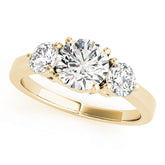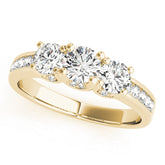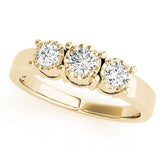The History and Meaning of April’s Birthstone
Birthstones are associated with several values, customs, and religious beliefs. We dig into the history and significance of April's stunning birthstone, the diamond.
Origins of birthstones

Birthstones are thought to have originated with Aaron's breastplate, which contained 12 gemstones representing Israel's twelve tribes. In ancient Rome, birthstones were believed to possess mystical and magical energies used for protection. Hebrew temple priests wore a breastplate adorned with 12 gems, each a different colour.
When the American National Association of Jewellers established an official birthstone list in 1912, each gemstone was formally associated with a specific month of the year.
Birthstone jewellery—such as rings, earrings, and necklaces—is now often given as a gift. Birthstones are thought to bring good fortune and prosperity to the wearer.
April’s birthstone: the diamond

According to current and traditional birthstone lists, April is honoured with the diamond as its sole birthstone—also known as the King of all Birthstones.
The diamond's name comes from the Greek word "Adamas," meaning "unconquerable". This precious gemstone has captivated hearts for centuries.

Someone born in April who wears a diamond is believed to experience greater happiness in relationships, competitiveness in life, and enhanced inner strength. Other associated qualities include balance, mental clarity, and success.
History of diamonds

Natural diamonds were formed over 3 billion years ago under intense heat and pressure deep beneath the Earth. They were later brought to the surface by volcanic activity.
Diamonds have long been coveted across the globe. Ancient Sanskrit texts dating back to 400 B.C. mention their exceptional value. Caravans carried Indian diamonds to medieval markets in Venice, and by the 1400s, they were sought after by Europe's elite.
India's diamond supply began to diminish in the 1700s, leading Brazil to become the dominant source for over 150 years. In the 1860s, the discovery of diamonds near Kimberley, South Africa, gave rise to the modern diamond market.
Diamond and beliefs

Beyond their beauty and luxury, diamonds carry rich etymological, mythological, and spiritual significance. Ancient texts suggest they were created by lightning bolts or were tears of the gods. The Romans believed Cupid's arrows were tipped with diamonds.

In Hindu culture, diamonds are associated with Venus, while other traditions link them to Mars. Warriors wore diamonds in battle believing they granted stamina, courage, and invincibility.
Diamonds were also believed to possess healing powers, treating ailments of the brain and pituitary gland. Their purity was said to detoxify the body from poison.








